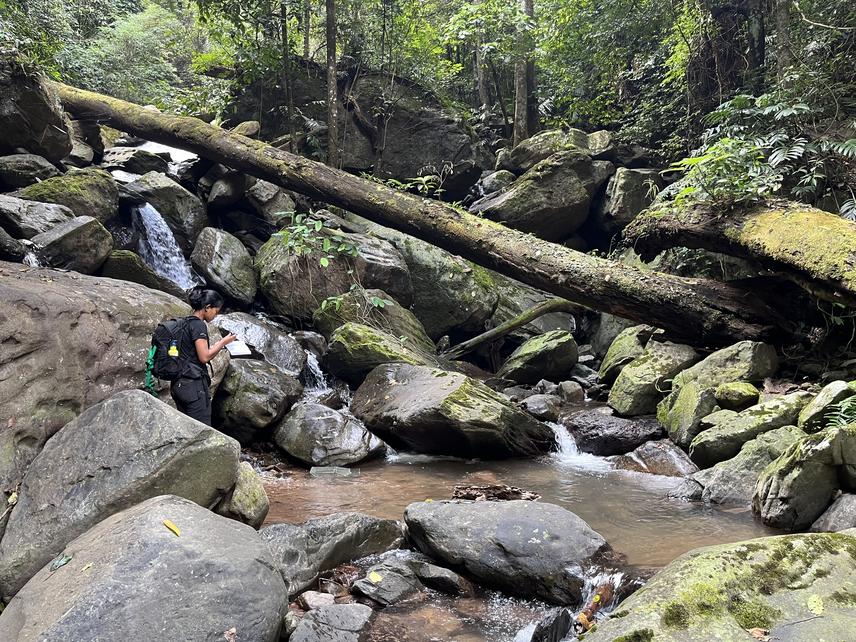Mark Richard Herse
Freshwater turtles are among the most threatened groups of vertebrates globally, particularly in Asia. In Thailand, the conservation of turtles and other wildlife relies mostly on the existence of state-protected areas and laws against hunting and wildlife trade, whereas community-based conservation initiatives are underrepresented and receive limited scientific support. To help address this gap in conservation, our project aims to support a grassroots river conservation initiative in northern Thailand, including efforts to maintain a breeding population of critically endangered big-headed turtles (Platysternon megacephalum). Big-headed turtles inhabit clear-running mountain rivers and streams characterised by sequences of waterfalls and pools (cyclic-step bedforms). Today, the species is rare or locally extinct across much of its geographic range in East and Southeast Asia. Northern Thailand may be one of the last remaining strongholds for big-headed turtles but is severely lacking in both conservation actions and information on population ecology.

Field crew member (Nan) checking a trap for big-headed turtles. Big-headed turtles are remarkable in their abilities to traverse and inhabit rugged river and stream ecosystems. © Mark Herse.
The focal conservation initiative applies to the upper Mae Lao River watershed in Phayao Province. The watershed is part of the Mekong River Basin and comprises an ambiguous national park boundary area, state-owned lands used and cultivated by local villagers, and a state-planned large dam site. Villagers have expressed concerns about the potential impacts of the planned dam project on a sacred cultural site, the local fishery, and community livelihoods, but have been limited in their ability to contest the project due to restricted land and decision-making rights. Considering these limitations, community leaders have strategically leveraged an extant population of big-headed turtles to delay the dam project, while promoting species conservation within their social networks. Likewise, community leaders have expressed interest in building species conservation measures into local environmental management. This turn of events has provided an important opportunity for community members and partnering researchers to work together towards mutual freshwater conservation goals.
Thus, our project will build upon a recent pilot study of big-headed turtle distribution and habitat associations in the upper Mae Lao River watershed. Specifically, our project aims to (1) establish a mark-recapture programme for examining seasonal movements of turtles and estimating population density and underlying demographic rates; (2) hold a community workshop to explore and identify potential evidence-based strategies for improving species conservation and habitat management (e.g. community-protected areas, fishing and irrigation guidelines); and (3) develop educational and awareness-raising texts and activities related to turtle ecology and conservation in collaboration with local schoolteachers.
Header image: Adult big-headed turtle resembling a rock. © Mark Herse.